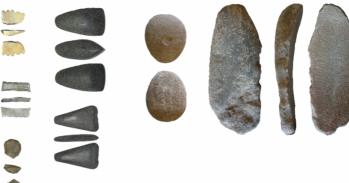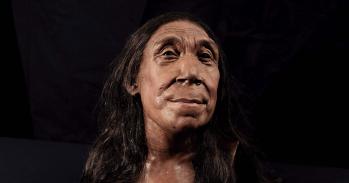
Large clusters of rock art spanning thousands of years but located at the same site may hold key to detecting massive cultural changes in prehistoric hunter-gatherers of the north.
Large clusters of rock art spanning thousands of years but located at the same site may hold key to detecting massive cultural changes in prehistoric hunter-gatherers of the north.
The way the variations of image both mirror and reinterpret act as a kind of call and response between different packs of hunters across hundreds - even thousands - of years.
Mark Sapwell
Updating a virtual wall with details of our lives, and checking it to catch up with others, is part of the daily routine for millions.
But imagine a prehistoric version - with a timeline preserved in actual stone encompassing thousands of years, on which our ancestors used symbolic interpretations of animals and events to communicate with distant tribes and their own descendants - allowing us to trace societal developments in these ancient nomadic communities over the course of generations.
Cambridge archaeologist Mark Sapwell is using the latest technology to analyse the different types, traits and tropes in the thousands of images imprinted on two granite outcrops in the frozen north, where landscapes of early Bronze Age art spanning millennia stretch across areas of rock the size of football pitches.
“These sites are on river networks, and boat is likely how these Bronze Age tribes travelled,” explains Sapwell. “The rock art I’m studying is found near rapids and waterfalls, places where you would have to maybe leave the river and walk around - carrying your animal-skin canoe on your back - natural spots to stop and leave your mark as you journey through, like a kind of artistic tollbooth.”
The two sites that Sapwell is investigating, Zalavruga in Russia and Nämforsen in Northern Sweden, contain around 2,500 images each of animals, people, boats, hunting scenes - even very early centaurs and mermaids.
Using analytical software, archaeologists are able easily compare the imagery over large areas - adding and ticking off layers to create a sense of how people built on existing images to generate fresh perspectives on the art over generations, reflecting the cultural innovations as the nomads began to settle, and trade routes opened up.
“People would create art as an open invitation, it’s accumulative,” says Sapwell. “Like a Facebook status invites comment, the rock art appears very social and invites addition - the way the variations of image both mirror and reinterpret act as a kind of call and response between different packs of hunters across hundreds - even thousands - of years.”
Some of the first rock art - around 6,000 years old in Sweden - depicts mainly animals such as elk, with early additions to these works simply exacting replications, stamps of approval - a primitive ‘like’ - as Sapwell points out “if you didn’t like something you wouldn’t add to it”.
As the centuries pass, anthropomorphic themes develop with human depictions increasingly blurred with both old and new animal renderings - suggesting developments in animistic and possibly shamanistic thought processes.
The rock art may be responding to the potential burgeoning of socio-religious cultural consciousness - with man/animal hybrids, such as the blending of elk with man, potentially offering some of the earliest hints at tropes that become familiar in broader mythology centuries later, such as centaurs.
“Hybrids such as half human half fish become more and more integrated as if through the art this way of thinking was becoming ever more embedded and ‘usual’”, says Sapwell.
“Although there is no evidence of a set mythology, this shows how animal images were conduits of expression as new ways of thinking developed. Representations of boats also begin to emerge, which I think emphasises the increasing importance of travel between hunter-gatherer communities.”
As the art develops, it starts to go ‘mobile’ - coming off the rock and appearing on tools such as the handles of slate knives and pots. New and shifting trade networks began to open up across Sweden and Norway, with tools and the imagery on them dispersed over much wider areas:
“The style of elk for example becomes more distinctive in the rock as it mirrors the imagery found on tools. It’s a different way of interacting with an image - more intimate and personal - and these innovations are reflected back in the rock art as people become more creative.”
What was it that drew people back to the same place over thousands of years to contribute to these enormous natural canvases? “There’s clearly something quite special about these spaces. I think people went there because they knew people had been there before them. Like today, people have always wanted to feel connected to each other - this was an expression of identity for these very early societies, before written language.”
“It’s remarkable to see thousands of years of life depicted in the same space.”
This work is licensed under a Creative Commons Licence. If you use this content on your site please link back to this page.





